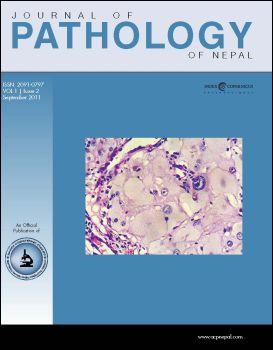Myelodysplastic syndrome: classification and changing concept
DOI:
https://doi.org/10.3126/jpn.v1i2.5410Keywords:
Myelodysplastic syndrome, Refractory anemia, Ring sideroblasts, MDS classificationAbstract
Myelodysplastic syndrome is a group of clonal disorders having wide range of outcome. Its classification and concept have been changed over time with better understanding of its prognosis and clinical significance. The first standard classification was FAB classification which came in 1982. It was based on findings on peripheral blood and bone marrow. Later in 2001, WHO incorporated clinical data into it and proposed a modified classification. The 2001 WHO classification made several criteria and entities more precise based on inputs from several studies. New terminologies (e.g., refractory cytopenia with multilineage dysplasia) and new group (e.g., myelodysplastic / myeloproliferative disorder) have been introduced and group like ‘refractory anemia with excess blasts in transformation’ was removed. Again in 2008, in collaboration with European Association for Haematopathology and the Society for Hematopathology, as well as considering several recommendations from a group of clinical experts, WHO published a revised and updated classification. In the latest MDS classification, the clinical implications of different groups have been given more importance and also the role of cytogenetics has been re-evaluated. Several groups were again redefined (e.g., myelodysplastic syndrome – unclassified, refractory anemia with excess blasts) or eliminated (e.g., refractory cytopenia with multilineage dysplasia and ringed sideroblasts) or newly introduced (e.g., refractory cytopenia with unilineage dysplasia). Childhood MDS was considered separately as demanded by several pediatric hematologists. It was also emphasized that the diagnosis and classification of MDS mainly require identification of dysplastic morphological features, routine stains and correlation with clinical data rather than cytogenetics which may be necessary only in rare cases.
Keywords: Myelodysplastic syndrome; Refractory anemia; Ring sideroblasts; MDS classification
DOI: http://dx.doi.org/10.3126/jpn.v1i2.5410
JPN 2011; 1(2): 142-150
Downloads
Downloads
How to Cite
Issue
Section
License
This license enables reusers to distribute, remix, adapt, and build upon the material in any medium or format, so long as attribution is given to the creator. The license allows for commercial use.




